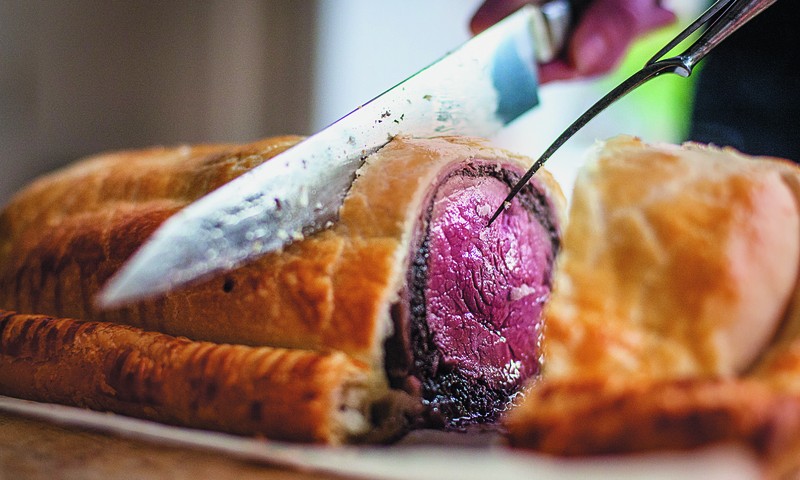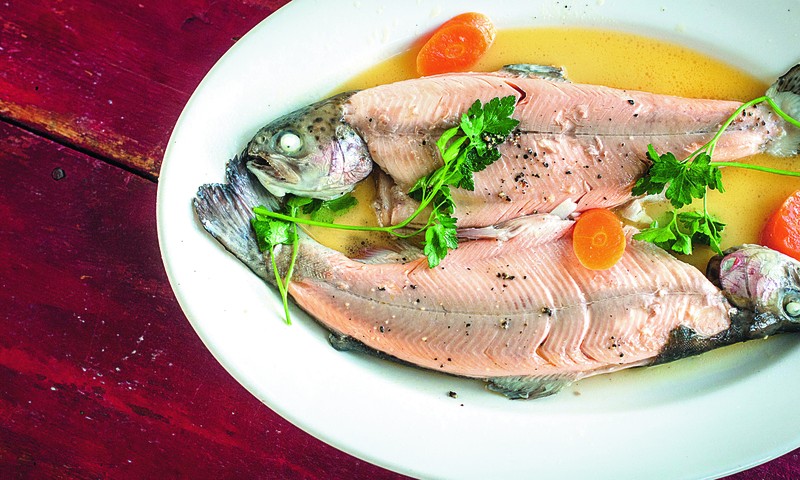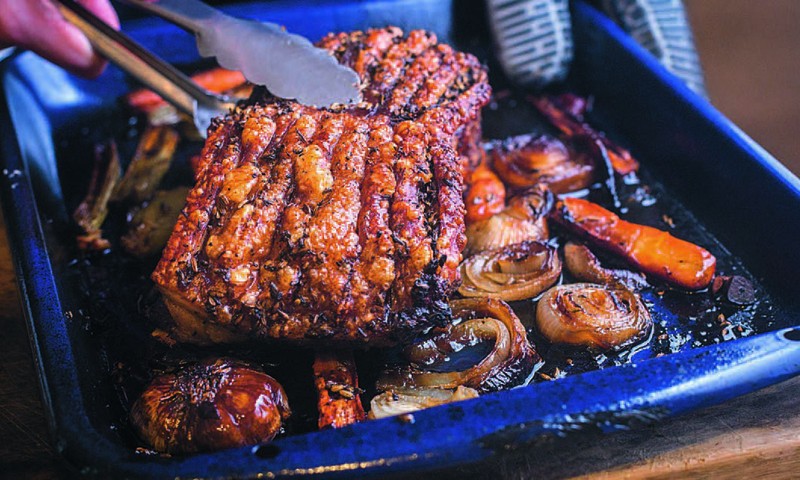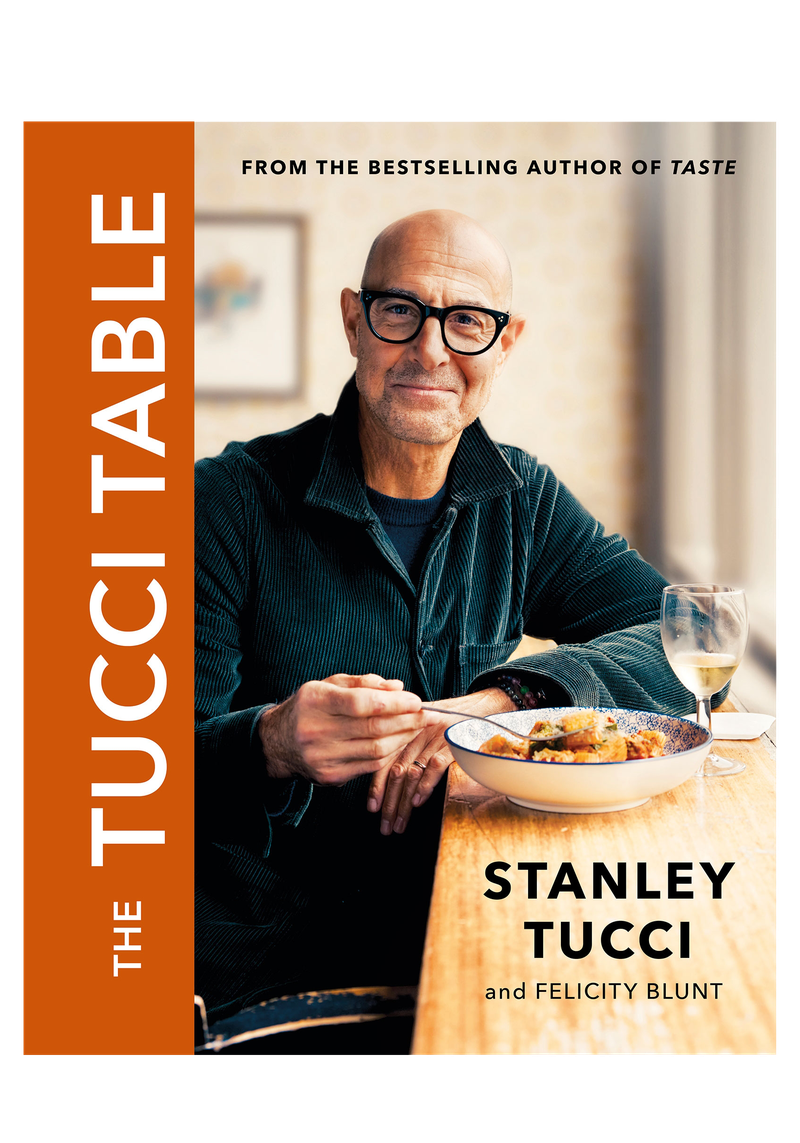3 Feast-Worthy Recipes From Stanley Tucci

Beef Wellington
This is another classic British recipe I love – a crumbly, flaky pastry wrapped around prime beef. Most of the preparation is done ahead of time and then the dish is refrigerated before being popped into the oven, and the result is bit of a showstopper.
Before cooking, make sure you take the fillet out of the fridge and let it come to room temperature. Season the fillet with salt and pepper.
In a large sauté pan, heat the olive oil over medium-high heat. Add the beef and sear it on all sides until it is nicely browned. If you want your beef wellington medium-rare, set it aside to rest now. If you would like it medium, place it in the oven for 10 minutes, then remove it and set aside to cool before you place it in the refrigerator. You can do this ahead of time.
In a large sauté pan, heat the extra virgin olive oil and the butter over medium-low heat. Add the mushrooms with the thyme and cook until the mushrooms are soft and all their water has evaporated, a good 8 to 10 minutes. Then add the Armagnac and continue to cook down, being very careful that the alcohol does not catch fire. Season with salt and pepper to taste and set aside to cool.
Lay out a piece of plastic wrap on your work surface and then place another piece across the first to form a cross. Then take the prosciutto slices and lay them out on top in two rows, making sure to lay the prosciutto in the same direction as the top layer of plastic wrap. Make sure the slices overlap so that there are no gaps and they are wide enough to enclose the fillet.
Take two-thirds of the cooled mushroom mixture and place it in the centre of the prosciutto along its entire length. Using the back of a tablespoon, push the mixture out to the sides. Place the chilled fillet in the middle of the mushroom mixture and take the remaining mushroom mixture and spoon it across the top of the fillet. Lift the top layer of plastic wrap and pull it up around the sides of the fillet, wrapping it over the mushrooms and prosciutto. Do the same going lengthwise with the bottom layer of plastic wrap. Tighten the plastic around the beef fillet so that it almost forms a sausage and then place in the fridge for 15 minutes or so.
No need to grease a baking sheet, just line it with parchment paper. Lay one sheet of puff pastry on your work surface. Cut off one third, roll it out slightly with a rolling pin so it’s big enough to accommodate the width and length your fillet, and place it on the prepared baking sheet. Take the fillet from the fridge and carefully remove the plastic wrap. Place it in the centre of the sheet of puff pastry. In a small bowl, beat the egg and milk together and gently brush some of the mixture along the edge of the puff pastry. Roll out the remaining pastry and carefully place it over the meat. Make sure it is big enough to hang down over the fillet. With a fork, press down the top layer of pastry onto the bottom layer, crimping them together to seal. Take a sharp knife and decoratively score the top of the pastry, without cutting through it. Then brush the remaining egg and milk mixture over the top of the beef Wellington. Refrigerate for a minimum of 1 hour.
Preheat the oven to 180°C
Bake in the middle of the oven for 35 to 40 minutes, until golden brown. Let it rest for 10 to 15 minutes, then cut it into half-inch-thick slices and serve with a vegetable of your choice.

Steamed Trout With Court Bouillon Sauce
Trout is a delicious and less expensive alternative to salmon. It’s often pan-fried, but I prefer this more delicate cooking method, which effectively steams the fish over a light bouillon. Adding butter at the end gives the sauce a delicate richness.
Place the water, wine, parsley, thyme, bay leaf, lemon, salt, peppercorns, garlic, leek, and carrot in a large saucepan or a steamer. Bring to a boil, cover, and simmer for 10 minutes. Place the fish on a rack over the top, cover tightly with aluminium foil, and simmer for 12 to 15 minutes more. If you are using a fish poacher or steamer, just prop the rack up with a couple of heatproof ramekins.
Remove the rack and set the fish aside to keep warm.
Strain the court bouillon into a small saucepan, setting aside the carrots and leeks, and cook over medium-high heat until it has reduced by about a third. Add the butter, stirring it in to create an emulsified sauce. Return the carrots and leeks to the sauce, taste, and adjust the seasoning if necessary.
Gently peel the skin from the trout and carefully divide the fillets among four plates. Spoon the sauce over each portion, making sure to include some pieces of leek and carrot, and garnish with a little fresh chervil.
Serve immediately.

Roasted Pork Belly
My friend chef Adam Perry-Lang once arranged for what seemed to be about twenty pounds of pork belly to be delivered to our house one Christmas. Needless to say, we became obsessed with perfecting the ultimate crackling. After a few trials, we found the method below to be consistently successful. However, all of your methods will be for nought unless you have a nice, thick layer of fat on your meat. By cooking the pork over the roasting vegetables, you end up with a delicious, thick gravy that combines the sweetness integral to the root vegetables with the salty, pork meat juices without you having to do much.
Ideally, take your meat out of the fridge a couple of hours before you want to cook it to bring it to room temperature. This also allows the fat to dry out, making for better crackling.
Preheat the oven to 250°C.
Place the thyme leaves, fennel seeds, and salt in a mortar and pound them with a pestle. When they are ground, pour in the olive oil and mix until they form a thin paste. Rub the paste into the pork belly skin, working it into the scored skin. The oil will help the herbs stick to the pork. Make sure to rub the paste into the bottom of the belly, too, so it imparts as much flavour as possible to your meat.
Place the pork belly on a roasting rack set in a deep baking pan. Roast the pork for about 30 minutes, until the skin has started to puff and turn golden. Remove and distribute the vegetables and garlic underneath the rack. Reduce the oven temperature to 160°C and bake for 1 hour more.
Pour half of the wine and half of the stock into the pan and continue to bake for 45 minutes more. Check that your meat is utterly soft, then remove from the oven; otherwise, continue cooking until the meat starts to fall apart. Note that every piece of meat you cook will be a little different – some will have more fat, some a little less. When the meat is done, let it rest for 15 minutes or so while you make the gravy.
Remove the rack from the roasting pan and set the pan on the stove top over low heat. Whisk in the flour until the mixture starts to thicken. Add the remaining stock and wine and bring to a simmer while mashing the vegetables into the liquid. Pour the mixture through a sieve into a bowl, pushing on the solids with the back of a spoon; discard any solids left in the sieve and transfer the gravy to a warmed gravy boat.
Coarsely chop the pork into pieces of meat and crackling and serve on a board with the gravy on the side.
Serve with mashed potatoes, a basic risotto or roasted vegetables.
The Tucci Table: The unmissable cookbook from the bestselling author of Taste (Seven Dials, £21.99 was £26) By Stanley Tucci
All products on this page have been selected by our editorial team, however we may make commission on some products.
DISCLAIMER: We endeavour to always credit the correct original source of every image we use. If you think a credit may be incorrect, please contact us at [email protected].



